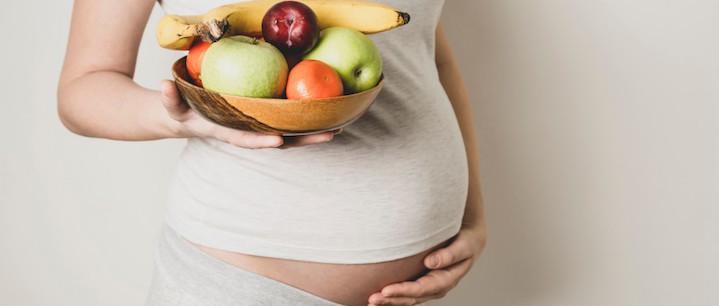
By Rachel Neifeld, RD, CDN
How diet can decrease gestational diabetes risk
Eating the right types of foods before becoming pregnant can decrease a woman’s risk of developing gestational diabetes (GDM). Research has shown strong associations between being obese and increased risk of developing this disease in women, but now new studies are finding that there is more to this picture than a woman’s body size alone.
If a woman with a high BMI (body mass index) eats mostly healthy fats, she can reduce her risk of developing GDM despite being overweight. Studies have found that the types of fats a woman eats are related to her risk of developing GDM. Women with diets higher in saturated fat and cholesterol and lower in healthier mono and polyunsaturated fats have increased risk. It is still advised that women try to reach a healthy body weight to improve overall health, but by choosing the right types of fats such as those found in fatty fish, nuts, seeds, avocado, and olive oil, a woman can cut her risk of developing GDM.
Can eating fruit affect the risk of gestational diabetes?
Some women may think that the high sugar content in this food group could increase the risk of gestational diabetes. However, findings of a recent study in Diabetes Care showed that higher consumption of whole fruits prior to pregnancy is not associated with increased risk of GDM. Fruit juice consumption did not directly show an increased risk either.
Fruit contains sugar which can be problematic for people at risk of developing diabetes, but the sugar in fruit is natural. It comes wrapped in a package of fiber and beneficial vitamins that help stabilize blood sugar rise and provide many other health benefits. For this reason, fruits should not be avoided as a precaution against gestational diabetes but consumed as part of a healthy pre-pregnancy diet. Women should aim for 1 ½ to 2 cups of fruits (remember to include a variety of colors). One large orange or peach, one small apple, eight large strawberries, or ½ cup of dried fruit count as 1 cup. Adding a cup of berries to your cereal and including an apple or orange as a snack will provide the recommended daily servings.
What about fruit juice?
Fruit juice, on the other hand, should be consumed in moderation as the skin and flesh of the fruit which contains the fiber has been removed. Because of this, the sugars in juice are quickly absorbed into the bloodstream and can spike blood sugar. Additionally, fruit juice does not provide many of the beneficial vitamins and minerals that it once could in its original, unprocessed form. Women who have GDM should avoid fruit juices. A good strategy to control consumption is to dilute a small amount of juice with sparkling water which provides refreshing flavor without too much added sugar.
By consuming more healthy fats, limiting saturated and trans fats, and eating plenty of whole fruits, vegetables, and fiber, a woman can effectively decrease her odds of developing gestational diabetes no matter her shape or size!
Read More:
Type 1 Diabetes
Glucose Challenge Test
Diagnosing Gestational Diabetes
Sources:
Journal: Diabetes Care
